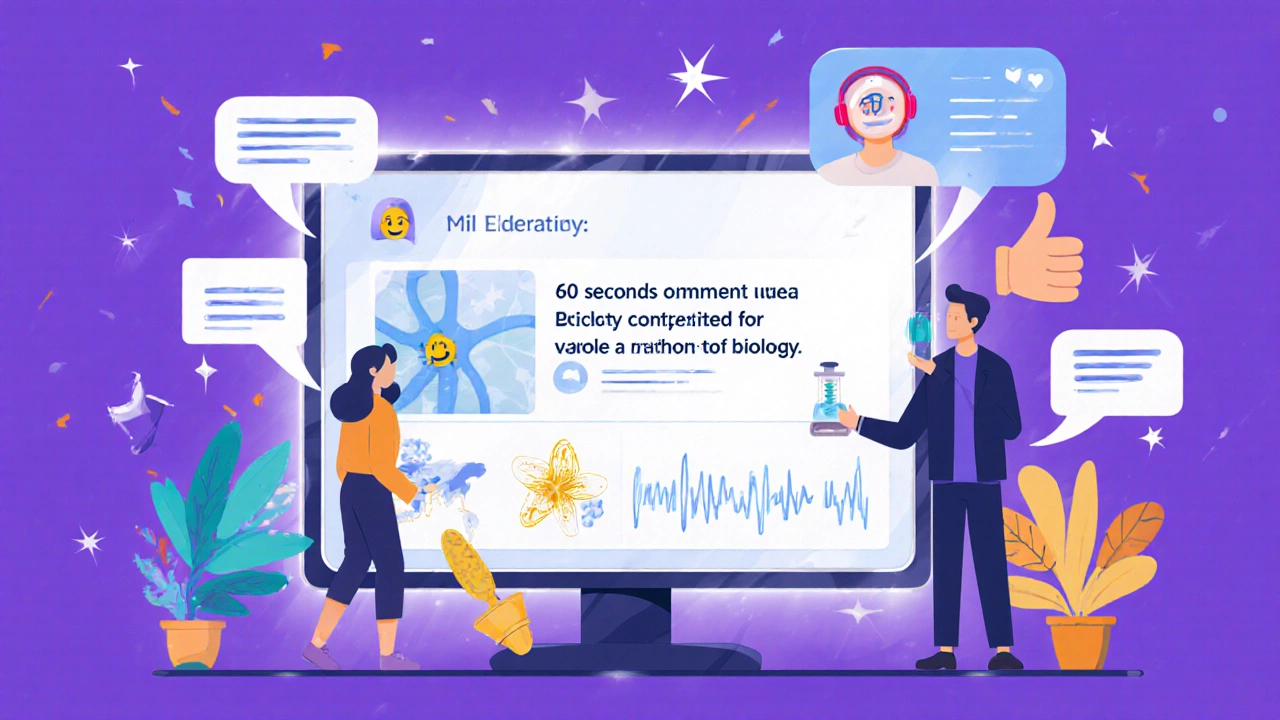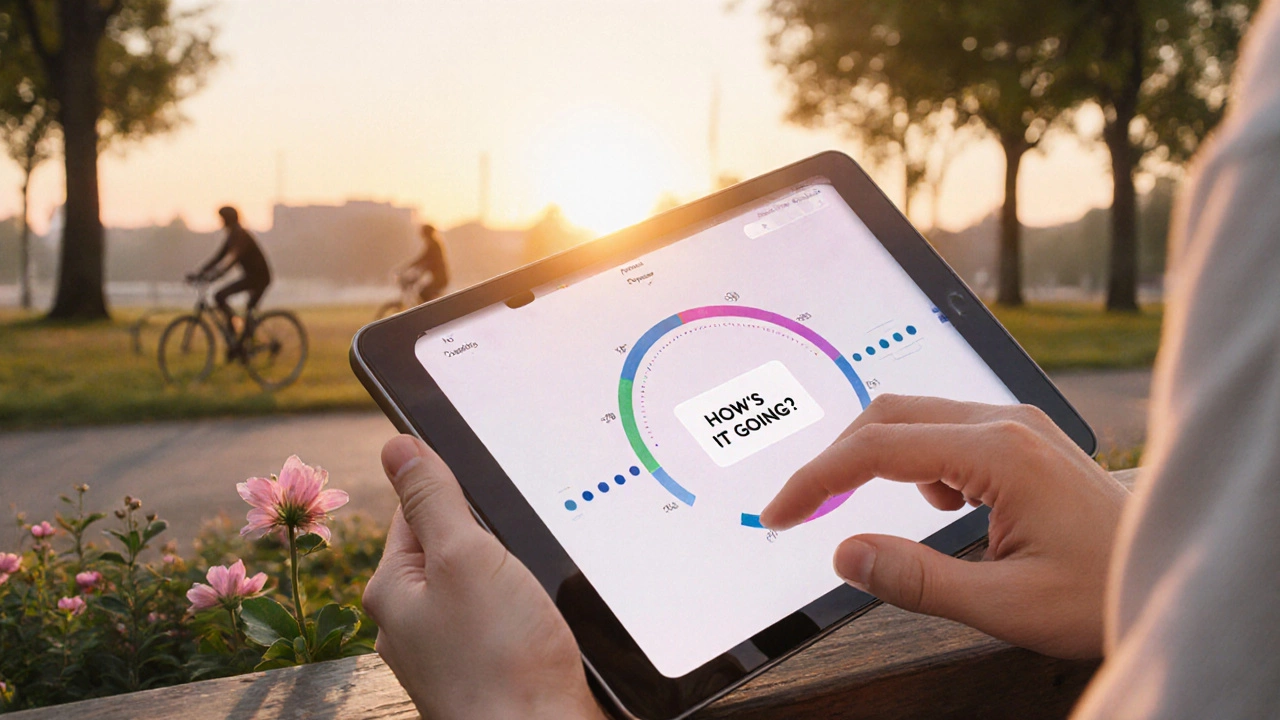Ever sat through an online course that felt like watching paint dry? You weren’t alone. Thousands of learners quit eLearning courses not because they weren’t smart enough, but because the design missed the basics. The three P’s of eLearning - Personalization, Participation, and Pace - aren’t just buzzwords. They’re the core reasons some online courses stick and others vanish from memory by lunchtime.
Personalization: One Size Doesn’t Fit All
Imagine a math course that teaches calculus the same way to a 16-year-old in Nairobi and a 45-year-old engineer in Berlin. It won’t work. Personalization in eLearning means adapting content to who you are - your background, your goals, even your learning style.
Good platforms don’t just dump videos and PDFs. They track your progress and adjust. If you keep missing quiz questions on quadratic equations, the system might offer a 5-minute video explaining it with real-world examples. If you breeze through the basics, it skips ahead. That’s not magic - it’s adaptive learning powered by simple algorithms that have been around since 2018.
Research from the University of Edinburgh found learners using personalized eLearning paths completed courses 40% faster and retained 65% more material than those in fixed-format courses. Why? Because your brain remembers what feels relevant. A nurse learning infection control protocols remembers better when examples use hospital scenarios she’s seen. A retail worker learning inventory software learns faster when the interface mirrors the system she uses on the shop floor.
Participation: Learning Is a Team Sport
Isolation kills online learning. You can’t just watch videos and call it done. Humans learn by doing, talking, and sharing. That’s why participation matters more than you think.
Effective eLearning platforms don’t just have discussion boards - they make them work. Think of it like a classroom where you’re not just raising your hand once a week. You’re posting quick reflections after each module. You’re responding to peers’ questions. You’re getting feedback from instructors within 24 hours.
Take Coursera’s peer-reviewed assignments. You don’t just submit a paper. You review three other learners’ work. That forces you to think critically about the material - not just memorize it. A 2023 study in the Journal of Online Learning showed learners who actively participated in peer discussions scored 32% higher on final assessments than those who didn’t.
And it’s not just text. The best platforms use audio clips, short video responses, and live Q&A sessions. A language course might ask you to record yourself speaking for 60 seconds. You get feedback from native speakers. You hear your own mistakes. That’s participation that sticks.
Pace: Let Your Brain Breathe
Most eLearning platforms treat time like a factory assembly line. Complete Module 3 by Friday. Finish the exam by Sunday. That’s not learning - that’s pressure.
The third P - Pace - means giving learners control over how fast or slow they move. It’s not about rushing through content. It’s about letting your brain process it. Studies show that spacing out learning over days, not hours, boosts long-term memory by up to 70%.
Look at Duolingo. You don’t have to do 30 lessons in one day. You get a daily goal of 5-10 minutes. That’s pace. It’s designed around how attention works. Your brain needs rest. It needs time to connect new ideas to old ones. If you’re trying to learn project management, don’t binge six hours of videos on a Sunday. Do 20 minutes a day, four days a week. That’s how habits form.
Platforms that force rigid deadlines often see high dropout rates. Those that offer flexible timelines - with gentle nudges, not penalties - see completion rates jump from 15% to over 50%. That’s the difference between a chore and a habit.

Why Most eLearning Fails (And How to Fix It)
Here’s the hard truth: 80% of corporate eLearning courses fail to change behavior. Why? They ignore the three P’s.
They use generic templates. No personalization. They lock you in a video loop with no interaction. No participation. They force you to finish in 48 hours. No pace.
Fixing this isn’t about buying fancy software. It’s about design choices.
- Instead of a 90-minute lecture, break it into five 8-minute videos with a quick reflection prompt after each.
- Replace a static quiz with a scenario-based challenge: “Your client just canceled. What’s your next move?” Let learners choose their path.
- Let learners set their own weekly goals. No auto-enforced deadlines. Just progress tracking.
Small changes like these make a huge difference. A UK-based healthcare provider redesigned its staff training using these three principles. Completion rates jumped from 38% to 81% in six months. Employee confidence in new procedures went up 60%.
What to Look for in a Platform
Not all eLearning platforms are built the same. Here’s how to spot one that gets the three P’s right:
| Feature | Personalization | Participation | Pace |
|---|---|---|---|
| Content Delivery | Adapts based on quiz results and past behavior | Includes peer review or discussion prompts | Allows self-paced progression with no hard deadlines |
| Feedback | Instant, specific feedback on exercises | Instructor or peer responses within 24 hours | Progress reminders, not pressure alerts |
| Assessment | Varied formats: simulations, case studies, not just multiple choice | Opportunities to teach others (e.g., explain a concept in a video) | Retakes allowed without penalty |
| Mobile Experience | Content adjusts for screen size and usage context | Easy to comment or respond on mobile | Offline access and sync when back online |
If a platform doesn’t check at least two of these boxes for each P, it’s probably just repackaged PowerPoint slides with a fancy name.

Real-World Example: A Teacher’s Story
Emma, a high school biology teacher in Oxford, switched from using a rigid LMS to a platform built around the three P’s. Her students used to skip videos. Now, they log in daily.
Here’s what changed:
- Personalization: Students who struggled with genetics got extra diagrams and analogies. Those who aced it got extension challenges on CRISPR research.
- Participation: Instead of writing essays, students recorded 90-second TikTok-style videos explaining a concept to a friend. They had to reply to three classmates’ videos.
- Pace: No due dates. They could finish the unit in a week or take three weeks. Emma sent a gentle email: “How’s it going? Need help?”
Pass rates went from 68% to 92%. Students started asking for more modules. They weren’t just completing assignments - they were curious.
Are the three P’s only for corporate training?
No. The three P’s work for any kind of online learning - from K-12 classrooms to university degrees to adult learners studying a new skill. Whether you’re learning Spanish, coding, or accounting, your brain responds the same way: it learns better when content feels personal, you’re engaged with others, and you can move at your own speed.
Can I apply the three P’s to free courses like YouTube or Khan Academy?
Absolutely. Free platforms don’t always offer built-in tools for personalization or participation, but you can build it yourself. Create a learning journal where you write how each lesson connects to your life. Join a Reddit group or Discord server to discuss videos. Set your own weekly goals - maybe two videos a week, not five. You’re not stuck with whatever the platform gives you.
What if I’m not a tech person? Can I still use platforms with the three P’s?
Yes. The best platforms for non-tech users are simple. Look for ones with clean interfaces, clear buttons, and minimal pop-ups. Many now work like apps on your phone - swipe, tap, record. If you can use Instagram or WhatsApp, you can use these platforms. You don’t need to know what an LMS is to benefit from personalized lessons or peer feedback.
Do the three P’s work for languages or soft skills?
They work even better. Language learning thrives on personalization (custom vocabulary lists), participation (speaking with others), and pace (daily practice, not cramming). Soft skills like communication or leadership? Those are learned by doing, not watching. Role-playing scenarios, peer feedback, and self-paced reflection are essential. Platforms that ignore the three P’s in these areas are just wasting your time.
Is there a downside to personalization in eLearning?
Only if it becomes too narrow. If a system only shows you what you’re already good at, you never grow. Good personalization challenges you just enough - it doesn’t coddle you. It’s like a coach who knows your strengths but still pushes you to improve your weak spots. The best systems balance familiarity with stretch.
Final Thought: Learning Is Human
eLearning isn’t about technology. It’s about people. The three P’s - Personalization, Participation, Pace - aren’t features. They’re reminders. Your brain doesn’t learn from passive content. It learns from connection, context, and time. The best eLearning platforms don’t try to replace teachers. They give teachers tools to be more human. And that’s what makes learning stick.
